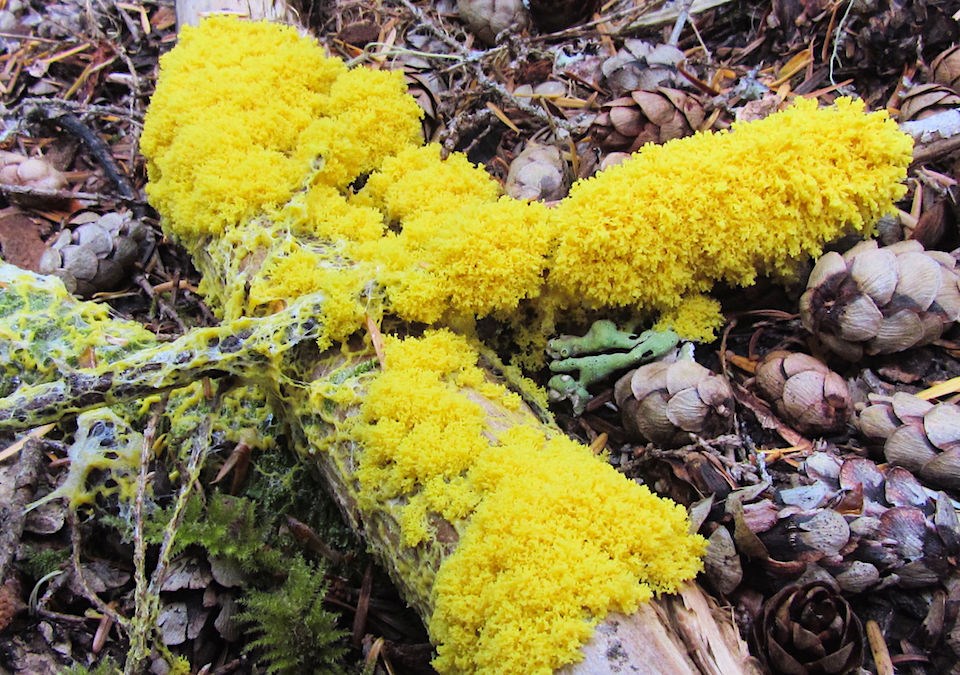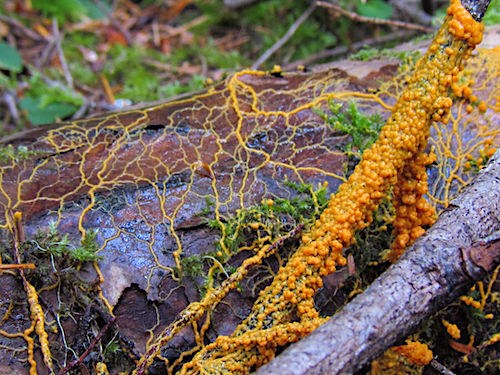Last updated: September 28, 2020
Article
Slime Molds

C. Vecchio Photo
At least 60 species of slime mold can be found in Mount Rainier National Park. "Slime mold?" you ask. "What's a slime mold?" These remarkable organisms were once thought to be fungal, but advanced scientific analyses show them to be something which doesn’t fit within the system of taxonomic rank. They are not molds despite the name, although they exhibit characteristics common to fungi, but also to those demonstrated by animals. Scientists were puzzled as to where to place them in the taxonomic structure, and eventually they were relegated to a catch-all Kingdom of unrelated eukaryotic organisms (those with enclosed cellular nuclei) known as "Protoctista," a term sometimes used synonymously with the word "protist" (the latter now being used as a matter of convenience rather than in the taxonomic sense). In other words, a protist is any eukaryotic organism that is not an animal, plant, or fungus.
There are two types of slime mold: cellular and acellular (plasmodial). During the life cycle of cellular slime molds, they remain as single cells. When an individual cell encounters a food source, it sends out a chemical signal which attracts others of its kind, drawing them in until they form a mass which is capable of movement in an amoeba-like fashion, with each cell maintaining its individual integrity. The fruiting bodies of cellular slime molds release spores, each of which becomes a single amoeboid cell when it germinates. Cellular slime molds are rarely visible to the naked eye.

C. Vecchio Photo
On the other hand, plasmodial slime molds start out as individual amoeboid cells, but join together to form a multi-nucleate mass having only one cellular membrane (a "super-cell" containing multiple nuclei). This mass is referred to as a plasmodium and is frequently observed as threads of "slime" on rotting wood. The plasmodium matures into a network of interconnected filaments, which slowly moves as a unit as its protoplasm streams along the network. These plasmodia can be quite large; some species have been recorded to be over thirty square meters in size!
Also referred to as myxomycetes, plasmodial slime molds are commonly seen on decaying forest litter and rotting wood. They play an important role as decomposers and recyclers of nutrients in the food web. Their diet consists of the bacteria which feed on decomposing plant matter. In turn, slime molds may be consumed by nematodes, beetles, and other larger life forms. In the laboratory, slime molds have demonstrated the ability to navigate a maze in order to reach a food source, and to anticipate the reward of food at a future time after having been fed on a regular schedule at one location. They communicate via chemical signals to others of their kind. That's pretty impressive for an organism without a brain! They can be found throughout the world, but the Pacific Northwest and Mount Rainier National Park provide ideal habitat for these amazing creatures.
